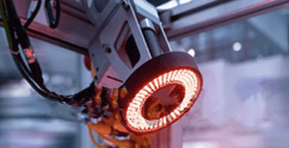Industry News
Classification of Industrial Cameras
Classification by chip process type
Classification | Main Differences |
CMOS | Integrated on semiconductor materials of metal oxides. Low manufacturing cost and power consumption. Color restoration ability is weak. CMOS chips have roller shutter exposure and global exposure. Roller shutter exposure is suitable for photographing still objects. Shooting moving objects will have shadows and the image will be deformed. Global exposure. You can shoot still or moving objects.
|
CCD | Integrated on semiconductor single crystal materials. High manufacturing cost and power consumption. Relatively strong color restoration, good image sharpness and clarity. The exposure mode of CCD chip is generally frame exposure or global exposure. It can shoot still or moving objects.
|
Classification by sensor (pixel arrangement)
Classification | Main Differences |
Linear array camera | Linear chip. There must be relative motion between the camera and the object to image; Relatively high price. High line frequency and lateral resolution; Due to the large amount of data transmitted, the data transmission interface is generally GigE interface, Cameralink interface and coaxpress interface.
|
Area array camera | Area array chip, and the common camera interfaces are C , CS , F; Object can be imaged when it is still or in motion; Prices vary according to performance; Can obtain two-dimensional image information in real time and measure the image intuitively; Data transmission interfaces include GigE, IEEE1394, USB, camera link and other interfaces.
|
Classification by image mode
Classification | Main Differences |
Colorful camera | Image is colorful. |
Monochrome camera | Image is black and white. |
Classification by signal delivery mode
Classification | Main Differences |
Analog camera | Low resolution, common 400000 pixels, slow acquisition speed, frame rate of 30 frames per second, low price; Divided into progressive scanning and interlaced scanning, which are generally interlaced scanning, and the image transmission is vulnerable to noise interference, resulting in the decline of image quality; analog signal, and the image acquisition card is used outside the camera Mold/ Digital signal conversion; Mostly used in real-time monitoring and other security industries, and the market utilization rate is gradually decreasing
|
Digital camera | Resolution ranges from 300000 to 120 million, with fast acquisition speed and different prices; Roller shutter exposure and global exposure, good image quality; Digital signal, which is completed in the camera/ Digital signal conversion; Gradually replace analog cameras.
|
Other classifications
By resolution | can be divided into ordinary resolution camera and high resolution camera; |
By signal output speed | can be divided into ordinary speed camera and high-speed camera; |
By response spectrum | can be divided into visible (ordinary) camera, infrared camera, ultraviolet camera, etc. |
Please feel free to give your inquiry in the form below.


